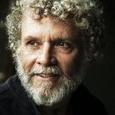Many people underestimate the healing power of Conscious Breathing, and that’s unfortunate, because by controlling or regulating our breath, we can regulate and control many of our body’s vital chemical and biological processes.*
An ancient saying: “When you own your breath, no one can steal your peace.”
The following exercises are based on classic Prana Yoga and Swara Yoga teachings. There are many levels and layers to these ancient practices: in fact, you could spend a lifetime exploring the intricacies of the Hindu Science of Breath.
My aim here is to give you a taste of it, and to offer some simple and effective yogic breathing techniques that promise immediate benefits—even for the novice. So, let’s get right to it!
The first thing to do if you suffer from localized physical pain or discomfort or when you experience general malaise is to check your breathing. Determine which nostril is more open or active, and which nostril is more closed or blocked.
The basic protocol is to inhale thru the active or open nostril, and exhale thru the closed or constricted one. Keep going back and forth: breathing in thru the dominant nostril and breathing out thru the congested one.
This first-level practice involves no breath holding. Simply inhale thru the open nostril then immediately switch and exhale thru the blocked one. Now depending on your degree of skill, you can incorporate breathing pauses or breath holding into the “treatment.”
A very simple breathing pattern is called “Mother’s Breath:”
Inhale 7, hold 1, exhale 7, hold 1… inhale 7, hold 1, exhale 7, hold 1
Inhale 7, hold 1, exhale 7, hold 1… inhale 7. hold 1, exhale 7, hold 1
Another basic technique for beginners is“Square Breathing:”
Inhale 4, hold 4, exhale 4, hold 4… inhale 4, hold 4, exhale 4, hold 4
Inhale 4, hold 4, exhale 4, hold 4… inhale 4, hold 4, exhale 4, hold 4
A more advanced protocol would be this one:
Inhale 4, hold 8, exhale 12… inhale 4, hold 8, exhale 12
Inhale 4, hold 8, exhale 12… inhale 4, hold 8, exhale 12
IMPORTANT NOTES:
As you breathe, bring soft open attention to the specific part or area of the body that you want to “heal.”
Remember the general principle: infuse every cell with breath, or in other words, “saturate the body with Prana.”
Another tip: by drawing the belly button toward the spine and “squeezing” all the air out on the exhale, you create a reflexive force, which makes the next inhale easier and fuller; it also allows the energy to penetrate more deeply.
Breath Holding: this always refers to and assumes “conscious effortless retention of breath,” which means no forcing, struggling, or straining whatsoever.
Counting: You can count the breaths in seconds; you can use your heartbeats; or you can use any easy, steady, comfortable count.
Basic Posture: Sitting in a relaxed position, or lying on your side (congested nostril on the up side); eyes closed; attention directed inward.
Position of the Tongue: Draw your tongue back slightly, keep it relaxed, and see that the tip of the tongue is not making contact with anything anywhere in the mouth.
Duration of Practice: Maintain the continuous alternate nostril breathing, or the advanced exercise (incorporating breath-holds) until the nostrils are equally open and balanced, or until the pain or discomfort has dissolved.
Good luck in your practice!
Please write to me with any questions or comments.
Love and Blessings,
Dan
Dan Brulé has studied and practiced breathwork with more than 80,000 people in over 40 countries since 1976. His travel and teaching schedule is posted at www.breathmastery.com.

Post new comment
Please Register or Login to post new comment.